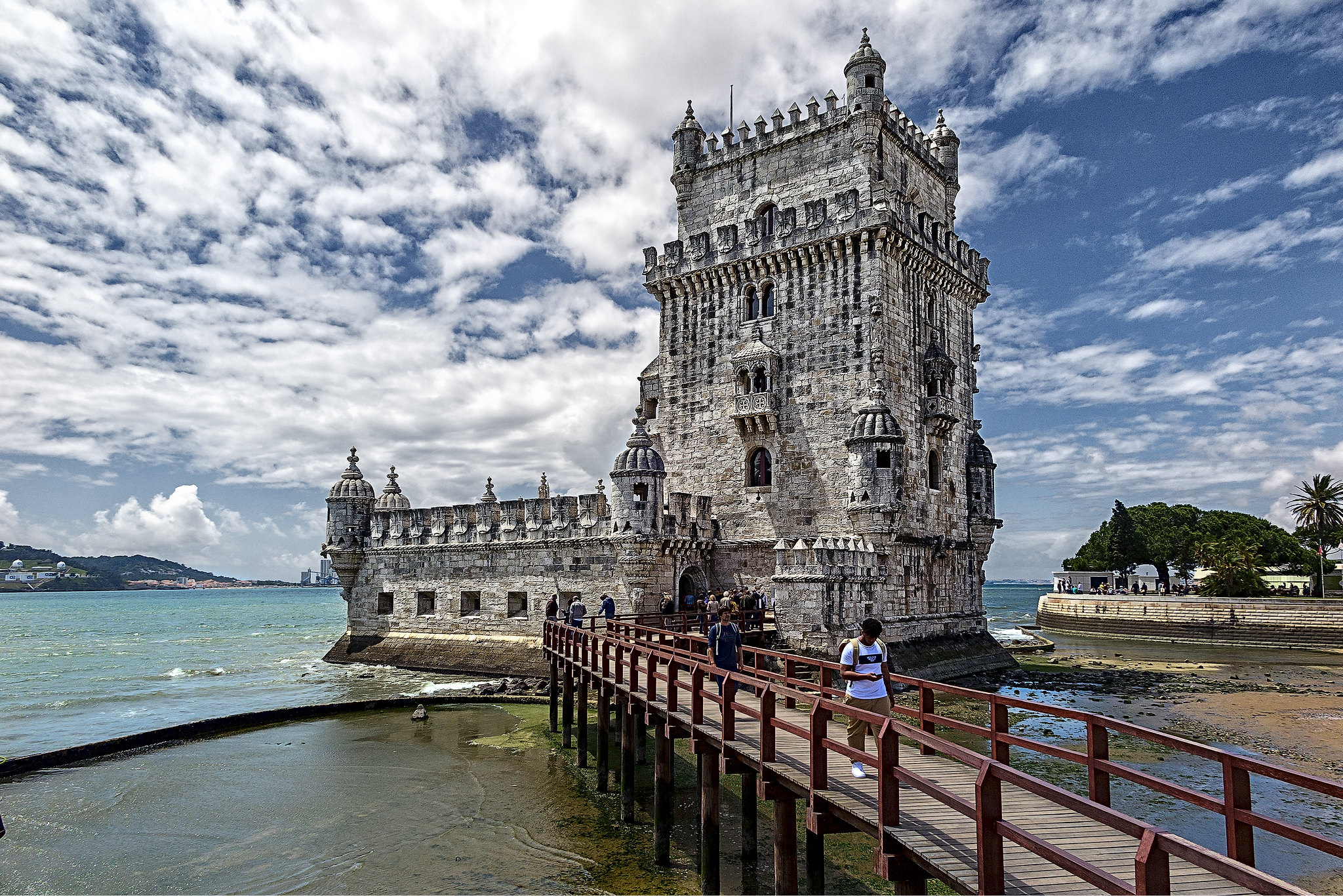Belém Tower, a jewel of Portuguese architecture, stands proudly on the banks of the Tagus River in Lisbon, captivating visitors with its unique blend of beauty and historical significance. This iconic structure, also known as the Tower of St. Vincent, is a testament to the architectural prowess of the 16th century and serves as a prime example of the Manueline style, a distinctly Portuguese architectural movement that flourished during the Age of Discoveries.
The Manueline style, named after King Manuel I of Portugal, is characterized by its ornate and intricate designs, often incorporating maritime elements and symbols of Portuguese exploration. Belém Tower embodies this style in every aspect of its construction, from its elaborate stonework to its whimsical decorations. As you approach the tower, your eyes are immediately drawn to the delicate carvings that adorn its exterior, featuring twisted ropes, armillary spheres, and exotic plants – all nods to Portugal’s seafaring heritage and global explorations.
One of the most striking features of Belém Tower is its unique silhouette, which seems to rise organically from the water. The structure consists of a four-story tower attached to a bastion, creating a harmonious blend of military functionality and artistic expression. The bastion, shaped like a irregular hexagon, served as a defensive platform, while the tower itself housed garrisons and acted as a ceremonial gateway to Lisbon.
As you explore the tower’s interior, you’ll find yourself transported back in time, walking through rooms that once echoed with the footsteps of soldiers and royalty alike. The Governor’s Hall on the first floor is particularly noteworthy, with its ribbed vaulting and ornate fireplace showcasing the pinnacle of Manueline craftsmanship. Moving up to the King’s Hall on the second floor, you’ll be struck by the intricate decorations and the loggia that offers breathtaking views of the Tagus River.
Perhaps one of the most fascinating aspects of Belém Tower’s design is how it seamlessly blends form and function. While its primary purpose was defensive, the architects managed to infuse every inch of the structure with artistic flair. The watchtowers, for instance, are adorned with delicate turrets and elaborate stonework, transforming what could have been purely utilitarian elements into works of art in their own right.
The tower’s location is also significant, as it was strategically placed at the mouth of the Tagus River to guard Lisbon’s harbor. This positioning not only served a practical purpose but also allowed the tower to become a symbol of Portugal’s maritime power and exploration. As ships sailed past, Belém Tower would have been one of the last glimpses of home for departing explorers and one of the first welcoming sights for those returning from long voyages.
Today, Belém Tower stands as a UNESCO World Heritage site, drawing countless visitors who come to marvel at its architectural splendor and soak in its rich history. As you walk around the tower, you can’t help but feel a sense of wonder at the skill and creativity of the artisans who brought this masterpiece to life. Every carved stone and ornate detail tells a story of a nation at the height of its power, reaching out to explore the world while leaving behind a lasting legacy of architectural beauty.
In conclusion, Belém Tower is more than just a building; it’s a living testament to Portugal’s golden age of exploration and artistic achievement. Its Manueline style, with its intricate details and maritime motifs, continues to captivate and inspire visitors from around the world, serving as a reminder of the enduring power of architecture to tell stories and preserve history for generations to come.
Belém Tower stands as an iconic symbol of Portugal’s Age of Discoveries, blending Manueline architecture with defensive functionality. Its strategic location on the Tagus River served to protect Lisbon’s harbor and commemorate Vasco da Gama’s expedition. Today, the UNESCO World Heritage site attracts visitors from around the globe, offering a glimpse into Portugal’s maritime history and architectural prowess. The tower’s enduring presence continues to inspire and educate, bridging the past and present while remaining a testament to Portugal’s golden age of exploration and cultural significance.

